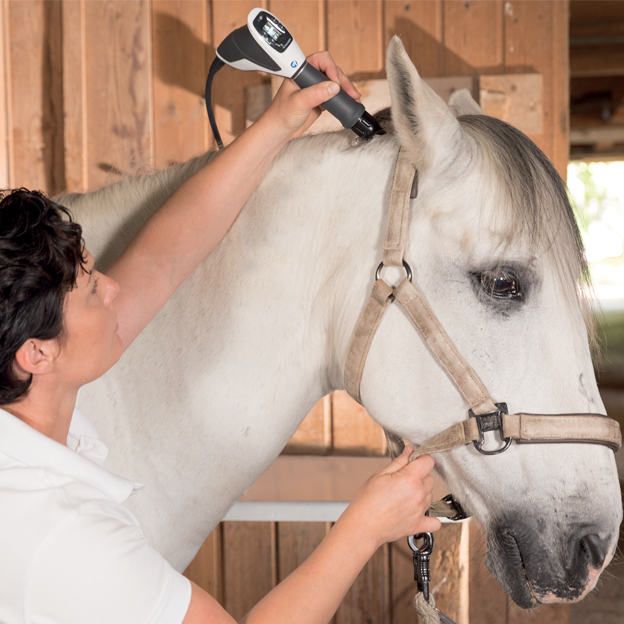Checking Out the Holistic Strategy of Equine Therapy for Personal Development
Checking Out the Holistic Strategy of Equine Therapy for Personal Development
Blog Article
Evaluating the Effectiveness of Laser Therapy in Horse Therapy for Injury Recovery
The analysis of laser treatment's performance in equine injury rehabilitation hinges on several aspects, including recuperation time, pain mitigation, and cells regrowth. Vets regularly observe remarkable results with laser therapy contrasted to conventional approaches, placing it as an important aspect in equine care.
Comprehending Laser Treatment
Laser therapy has ended up being a pivotal tool in vet medicine, especially in the therapy of equine problems. Recognized for its non-invasive nature and effectiveness, laser treatment includes the application of certain wavelengths of light to promote cells repair work and reduce swelling. This restorative technique is increasingly preferred for its capacity to accelerate the healing procedure in equines dealing with a variety of musculoskeletal injuries and chronic conditions.
The primary mechanism behind laser therapy is its capability to enhance mobile functions. In addition, laser therapy promotes vasodilation, enhancing blood flow and oxygen distribution to damaged cells, therefore quickening recuperation.
In equine medicine, laser therapy is specifically valuable for problems such as tendonitis, osteo arthritis, and wound recovery. The strategy is admired for its pain-relieving buildings, permitting horses to reclaim movement and feature much more quickly. Veterinarians additionally value its marginal adverse effects contrasted to various other treatment methods, making it a reputable and risk-free alternative for equine treatment.

Just How Laser Treatment Functions

Upon absorption, these photons trigger a series of biochemical adjustments, boosting mitochondrial function and bring about increased adenosine triphosphate (ATP) production. This rise in ATP increases cellular metabolic process, advertising tissue repair work and regeneration. Furthermore, laser therapy modulates inflammatory feedbacks by impacting cytokine degrees and reducing oxidative stress, thus easing discomfort and swelling.
An additional considerable aspect of laser treatment is its duty in improving microcirculation. The therapy advertises vasodilation, improving blood circulation and oxygen shipment to broken tissues (Equine Therapy). This assists in the elimination of mobile debris and supports the expansion of fibroblasts and collagen synthesis, important for wound healing
Scientific Evidence
The efficiency of laser treatment in equine therapy has been corroborated with different clinical studies, showcasing its healing potential throughout a variety of problems. A research carried out by Turner et al. (2012) showed that steeds treated with low-level laser therapy (LLLT) for ligament injuries showed sped up healing contrasted to those getting standard treatments.
Likewise, study by Johnson and associates (2015) concentrated on equine muscular tissue injuries, exposing that laser treatment substantially sped up muscular tissue fiber regrowth and decreased muscle mass tightness. Scientific analyses have actually shown that laser therapy can relieve persistent conditions such as osteoarthritis.
Veterinarian Insights

Vets additionally appreciate the versatility of laser treatment. She points out that laser therapy can be tailored to the particular requirements of each steed, ensuring optimal results.
Furthermore, veterinarians value the ability to integrate laser therapy with various other therapy modalities. This multimodal strategy can enhance total treatment efficiency, offering a thorough solution for equine rehab. Such endorsements from experienced professionals underscore the growing acceptance and application of laser treatment in equine medicine.
Practical Considerations
A key aspect of carrying out laser therapy in equine therapy involves recognizing the useful factors to consider that ensure its efficiency and security. It is important to pick the ideal laser tool, as different types differ in wavelength, power, and penetration depth. Vets should be fluent in these specifications to customize treatment protocols effectively to every injury type
Furthermore, the frequency and duration of laser therapy sessions require cautious planning to optimize healing advantages while minimizing any potential negative impacts. Constant monitoring of the horse's action to therapy more helpful hints can assist essential adjustments in the therapy routine. Establishing a risk-free and regulated atmosphere throughout therapies is likewise necessary to stop unexpected direct exposure to laser discharges, which can damage both the horse and the trainer.
Training and accreditation of workers providing laser therapy are extremely important to ensure correct technique and to copyright safety criteria. Furthermore, keeping exact records of each session, consisting of laser settings and observed end results, is important for assessing the general efficiency of the therapy and for making data-driven choices.
Conclusion
Laser therapy has emerged as an effective modality in equine injury recovery, providing significant advantages in recovery time, discomfort alleviation, and cells healing. For optimal outcomes, continual tracking and personalized therapy procedures remain necessary in leveraging the complete capacity of laser therapy in equine treatment.
Report this page